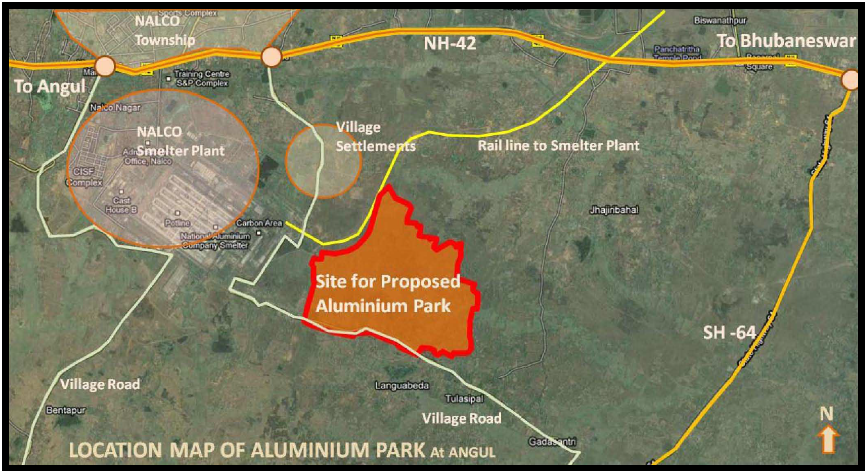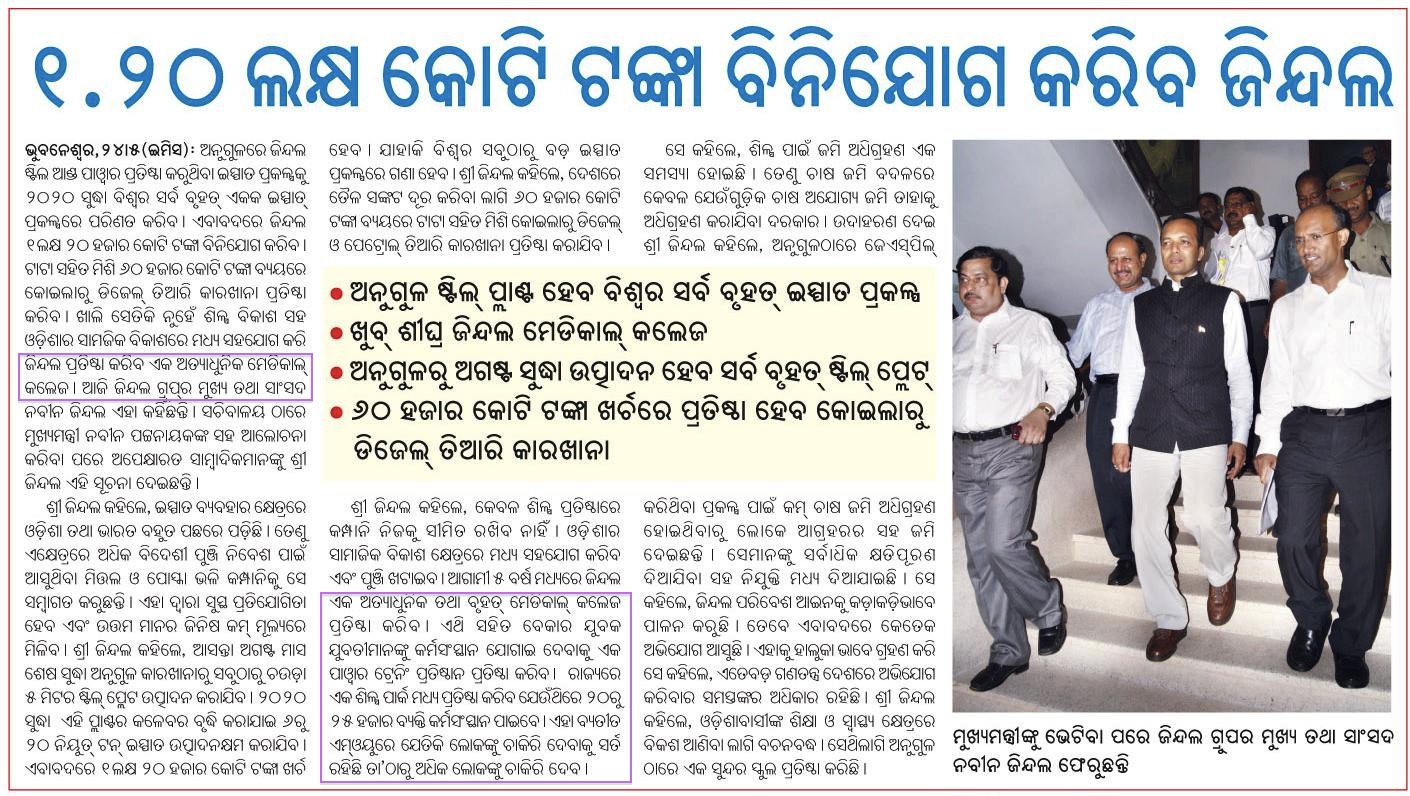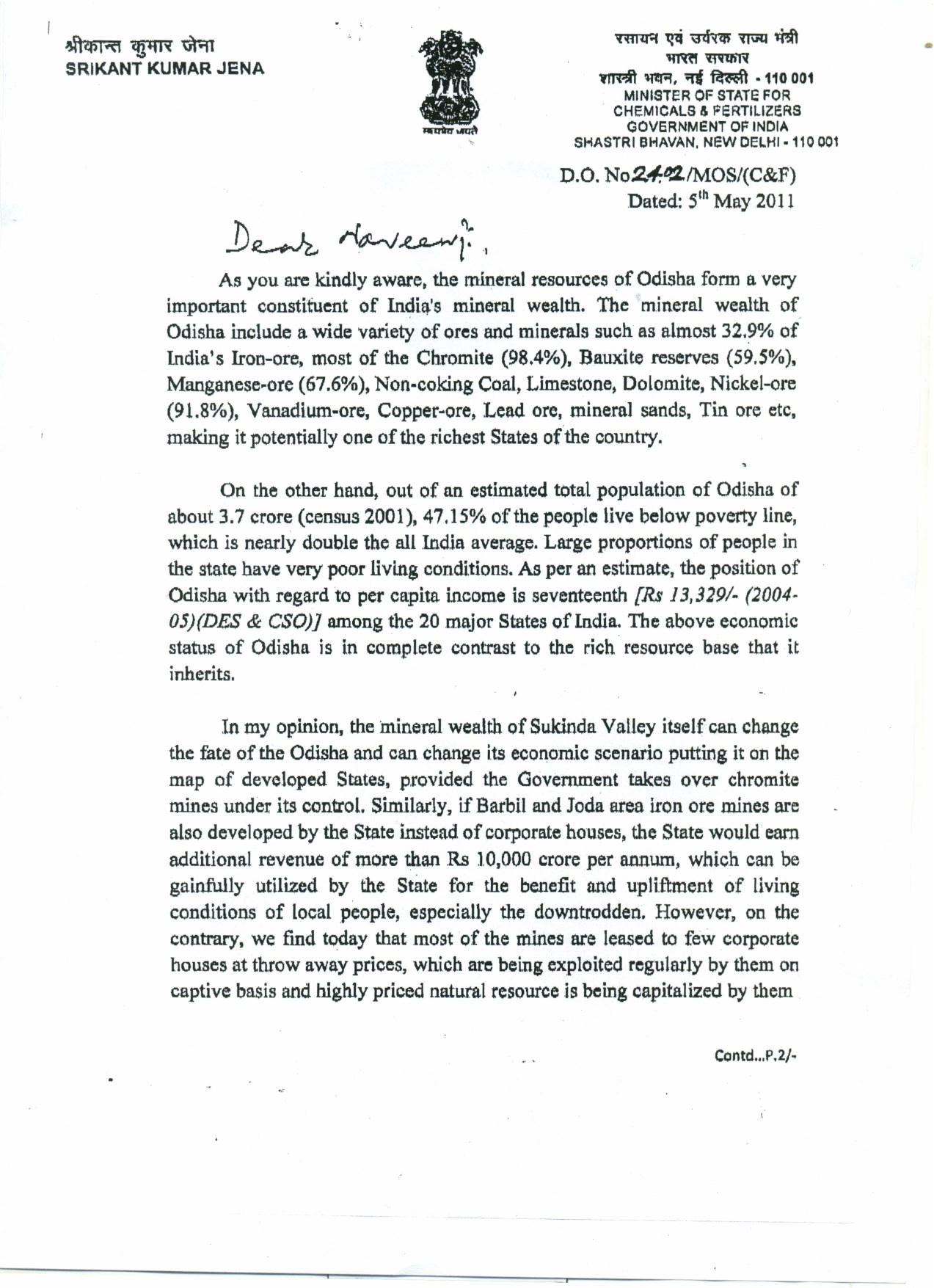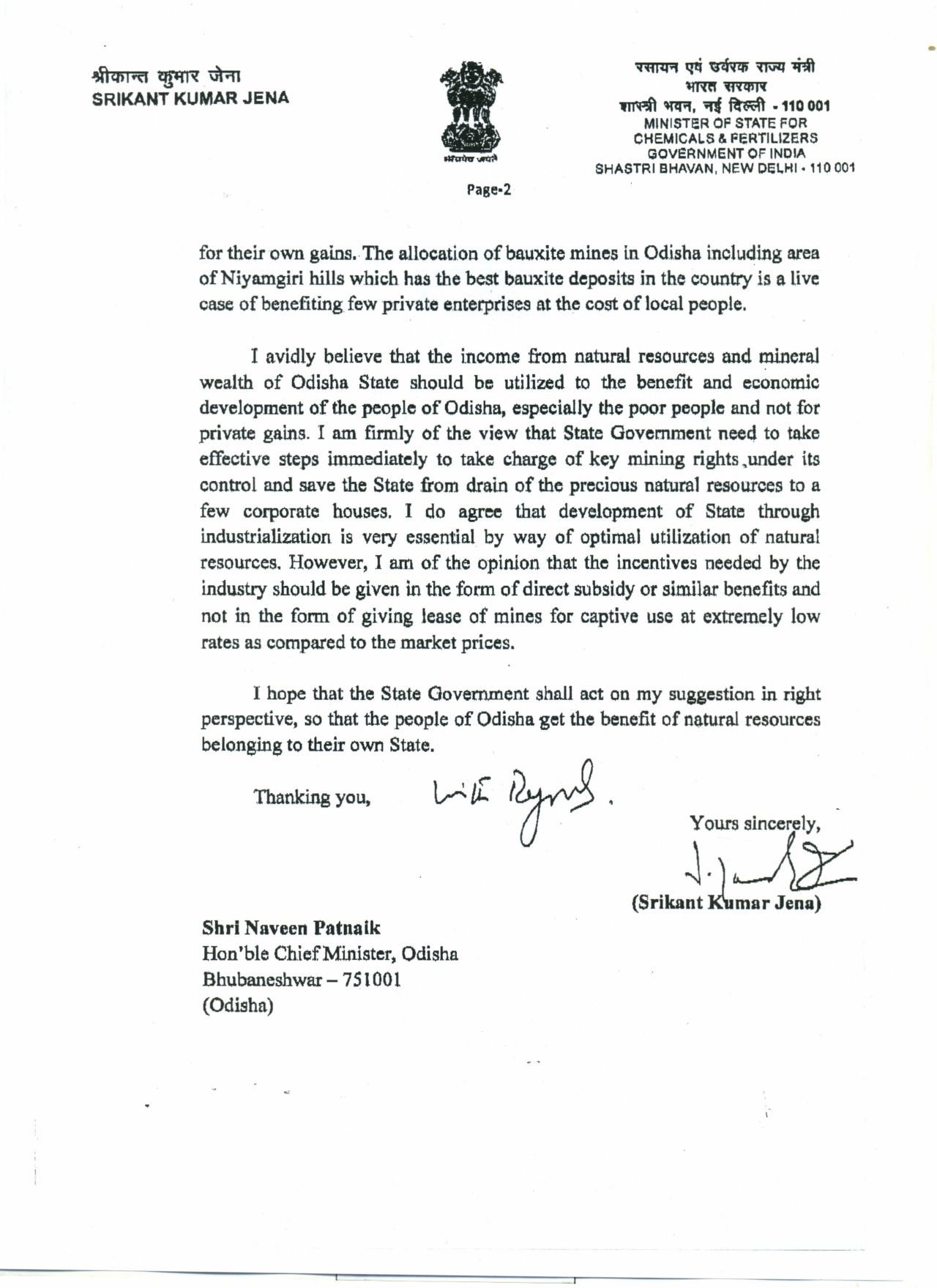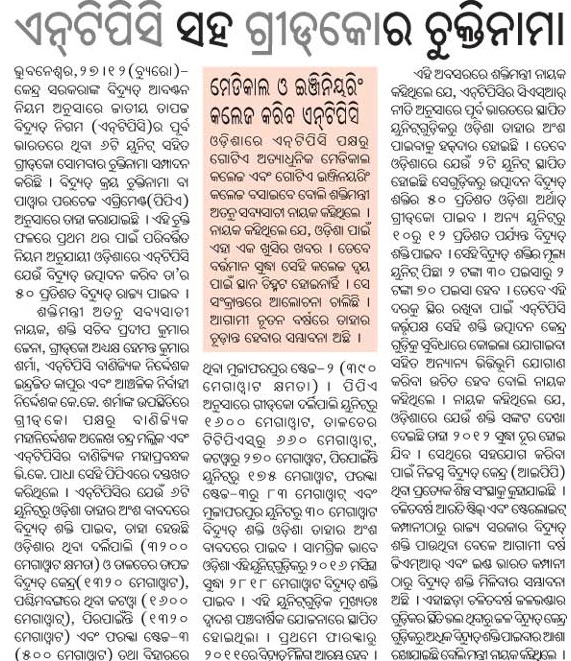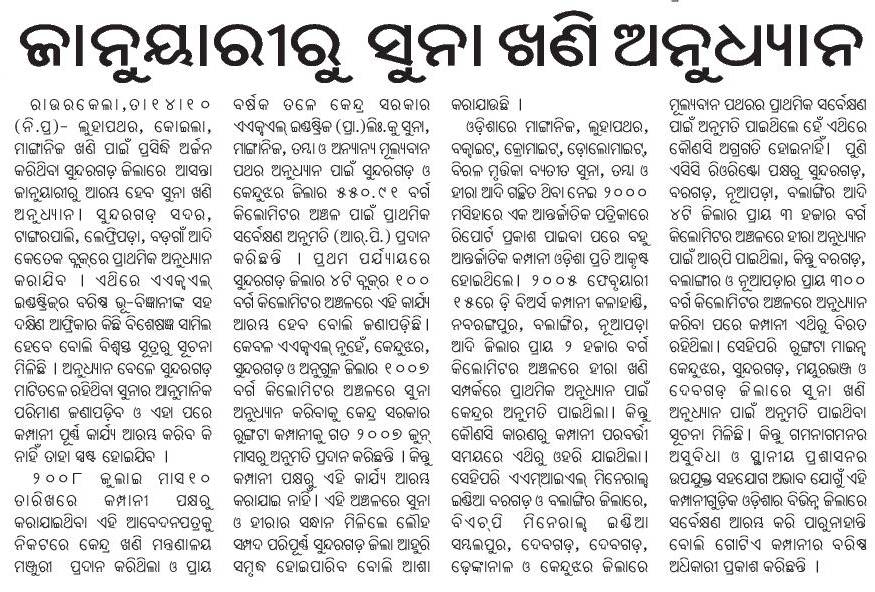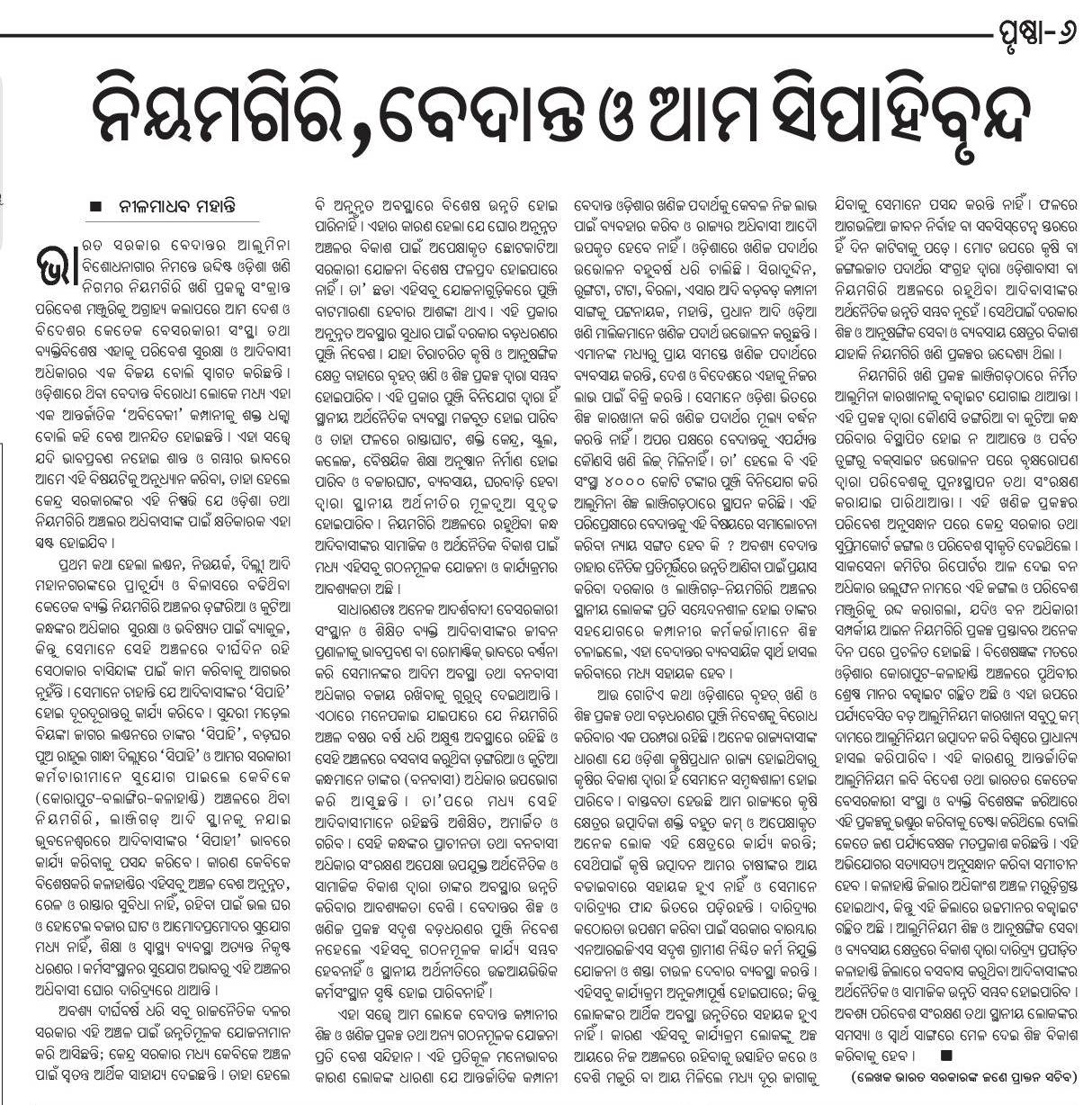…Niyamgiri, or Niyamgiri hill range—more than 100 hills; 250 square km approximate area—justifies the use of a few cliches. Lush. Verdant. Breathtakingly beautiful in clear, early morning light. The abundance of flora is easily evident (fauna, of course, is not easily spotted, but there are indisputable authoritative declarations on its abundance). Dense clusters of fruit-bearing trees on the slopes can pleasingly unnerve a typical city type. Niyamgiri mangoes are going for Rs 5 a kg or even less at small local markets. Medicinal plants that grow on the hill slopes, say locals, can cure severe wounds. A long trip to the indifferent care of the public heath centre is not required. So, yes, you can think ‘unspoilt’. Many members of the local tribal population—Dongria Kondh, who live on the upper slopes of Niyamgiri and the Kutia Khond, who live near the foothills—were bussed in for Rahul Gandhi’s rally on Thursday, and many of them were clearly happy that mining in Niyamgiri is now stalled. …
There are plot twists. Seven twists, in fact.
1. A question on local tribal custom.
2. The nuanced answer to the question, what do tribal groups want?
3. How the private investor in Niyamgiri is a bad advertisement for private investment.
4. Where’s the ruling party in Niyamgiri politics?
5. Can we assume a tribal arcadia?
6. Could Niyamgiri have become a laboratory of intelligent mining?
7. Can Orissa afford the Niyamgiri decision?
First twist: That the tribes are protected groups, under Schedule V of the Constitution, that wildlife protection rules apply to much of the area, that the ecosystem is something special are all undisputed facts. That tribal groups have always associated their deity with the hilltop is also supposed to be undisputed. But if you ask around persistently, you don’t get a clear answer. Some locals, otherwise unimpressed with Vedanta’s development efforts, say the hilltop becoming ‘sacred’ is a recent change. Many others dispute this. And this lack of local consensus on what should be widely known local tribal tradition is important because bauxite in Niyamgiri resides on the hilltop—that’s where the mining was to happen before the Central environment ministry denied Orissa Mining Corporation a clearance. This part of the story is more complicated than the usual anti-mining narrative suggests.
Second twist: What are the tribal groups opposing? They are opposing mining on the hilltop. But are they opposing the building of social and physical infrastructure in an area that’s staggeringly underdeveloped even by Indian standards? The answer’s no, and that might seem obvious. But its implications are not obvious. No one denies that successive state governments, Congress or BJD, have been worse than negligent in terms of building social/physical infrastructure. Niyamgiri is in Kalahandi, which is part of the infamous KBK (Koraput-Bolangir-Kalahandi) group of districts: extreme underdevelopment is the KBK signature. KBK districts account for 72 per cent of Orissa’s below the poverty line population. Of the 82 very backward blocks in Orissa, 53 are in KBK. KBK literacy rate is an abysmal 43.3 per cent, while Orissa’s state-wise average is 63.08 per cent. These are all figures (source: 2002 Orissa BPL Census) that tell a dreadfully grim story. And everyone in the Niyamgiri battle, whichever side they are on, agrees.
Siddharth Nayak, leader of Green Kalahandi, a local activist group that counts among its supporters Vandana Shiva, Medha Patkar and Arundhati Roy, said lack of minimum and halfway reasonable quality infrastructure is a big problem. He also said Vedanta Aluminum Ltd (VAL) hasn’t developed as much infrastructure as promised. This is a complaint made by many locals, tribal or otherwise. But if there’s no Vedanta, or no mining, no trigger effect from private investment, who will develop infrastructure, build schools, hospitals, roads? To say that the state administration should do it seems a bit of a cruel joke given decades of history. And especially because local infrastructure is linked to local economic vitality.
There’s no convenient railhead for Kalahandi, a brutal reminder of the district’s lack of minimum economic heft. Apart from agriculture in tiny holdings and forest produce, the latter, consumed and sold locally, and therefore offering no multiplier effects, Kalahandi has little to offer, except a king’s ransom in minerals. Eco-tourism on hills like Niyamgiri is the local activists’ favourite solution to act as a development trigger. But will eco-tourism concentrating on the lush hill ranges bring in the kind of investment that large-scale industrial activity can? And minus the large-scale investment, can enough jobs and enough infrastructure be created? Locals loudly complain that Vedanta doesn’t employ enough of them, that its school—DAV Vedanta School, an impressively well-appointed facility—doesn’t enroll enough tribal/non-tribal children. Vedanta officials deny this. But the fact of these complaints says something: that there was and is a strong expectation, from tribal and non-tribal locals, that big private investment can have beneficial effects. If we assume Vedanta’s corporate social responsibility hasn’t been up to the mark, then the question, from locals’ point of view, is one of more locally engaged private investors, not solely of the absolute villainy of private investors. But the villainy is what the simple narrative of Niyamgiri highlights.
The more nuanced telling of this story comes from the likes of Raju Sahu who came from Bihar to Kalahandi 10 years ago and runs four tea/food stalls on the state highway that links Lanjigarh—where Niyamgiri and the Vedanta factory are situated—to Bhawanipatna, the district HQ. Sahu says his business has more than trebled since Vedanta started operating from here about four years ago. But he complains: what will happen if operations shut down, and why isn’t the state highway in a better condition; his business would be even better then. All along the road and right up to the site of Rahul Gandhi’s rally, tiny businesses run by locals talk of a quantum jump in sales and brood about it all ending. They, too, are locals, and the Niyamgiri story and the Kalahandi story can’t be delinked from what they represent: the possibility of local economy regeneration.
Third twist: Vedanta hasn’t made it easy for themselves or for the cause of private investment. This is apparent even if one sets aside questions about how Vedanta set up its bauxite refinery, how it increased the capacity and the sources of its current bauxite.
Vedanta officials offer you stacks of folders on CSR activities. But local complaints on Vedanta’s less-than-stellar efforts are universal. Lanjigarh or the wider area surrounding it doesn’t even look like a company town, as habitations surrounding big industrial projects often do. The bauxite to aluminum business gives very high returns. Those kind of margins sharpen the question of effective spending for local development.
Also, the company faces several allegations of what activists call its “reliance” on strong-arm methods. A recent case, much mentioned by activists and Congress leaders, is that of the police picking up Lado Sikaka, a Dongria Kondh, and later releasing him. Sikaka says he was brutally roughed up and was almost “kidnapped” because, as he alleges, he’s a prominent anti-mine activist. The local police say picking him up was an error. Vedanta says it doesn’t support any strong-arm methods. But perceptionally, the company seems to have lost this battle.
The state highway mentioned earlier is a good example of bad optics. Vedanta’s 16 tonne carriers, which weigh 33 tonnes when packed with aluminum oxide produced in the plant, trundle down this road every day, 30 trips a day on average. The road shows the toll of this traffic. Local administration officials admit the state highway, never top quality in the first place, is in increasing state of disrepair. They talk about charging more toll from the carriers and rebuilding the road. But, strangely, Vedanta hasn’t helped in making this road better. The company’s response to this highlights the local administration’s responsibility, while adding that it has built roads elsewhere. But this is literally the road to the project. It was entirely appropriate therefore to see, on this road, a shabbily painted Vedanta signboard, hanging askew, with a Rahul Gandhi poster pasted smack in the middle of the board. That pretty much tells you the story of Vedanta’s big PR problem in Lanjigarh.
Another aspect of the same problem is how Niyamgiri was planned to be mined. The Orissa Mining Corporation and Sterlite (Vedanta’s sister concern) formed a joint venture, the Southwest Orissa Bauxite Mining. Sterlite has 74 per cent shareholding. This JV was supposed to act for OMC in choosing and monitoring mining on the Niyamgiri hilltop. But given that the controversy on Niyamgiri mining was brewing for two years, was this arrangement—essentially Sterlite in charge of ensuring good mining practices for bauxite that’s needed by its sister concern Vedanta —the smartest? Vedanta officials say Sterlite’s experience makes it ideal for the purpose. But they don’t have a good answer to the question whether this is credible in a charged atmosphere. Knowledgeable local activists keep making this point, with some justice.
Fourth twist: The absence of enough competition in local politics. The Congress is front and square in the Niyamgiri agitation, delighted now by its ‘victory’. But where is the BJD, Orissa’s ruling party? The line between activists and the Congress is muddled enough for the local Congress MP, Bhakt Charan Das, to have been a past head of Green Kalahandi. But the BJD is so politically ineffective here that bandh calls on Wednesday and Thursday were comprehensively ignored. The BJD’s local weakness may seem surprising for a party that has won three state elections, and whose chief minister, Navin Patnaik, has made a determined effort to appear tribal-friendly. The explanation lies in the vagaries of alliance politics. When the BJD and the BJP became allies, Kalahandi was given to the BJP to build a base. The alliance broke up on the eve of the 2009 assembly elections. So, the BJD essentially had a late start in Kalahandi. That political weakness has resulted in giving the local Congress, which was always strong in Kalahandi, a headstart in political mobilisation on Niyamgiri. Had the BJD been stronger, had it been in a position to work among local tribal groups, the contest would have been more even. Local BJD officials admit this privately.
The Niyamgiri story is not just about activists and tribal groups, it’s also about the Congress getting an unusually clear political field. There are no credible local politicians to speak for the mining project. The sharp irony here is that Patnaik is also the forest minister, who has publicly led the campaign for tribal land rights, but the Niyamgiri mining proposal has been deemed dramatically violative of forest rights. There’s no local BJD counter-point to this.
Fifth twist: Tribal arcadia? Yes, Niyamgiri provides plenty of natural resources. Yes, the hill inhabitants don’t get affected by the droughts that are so common to Kalahandi. Yes, rank starvation is not a feature in Niyamgiri. But the tribal groups still operate in what is a subsistence economy, and they don’t have access to basic facilities in education or health. Tribal groups seems more aware of this than those romanticising the Niyamgiri way of life. Which is why local tribals complain about not getting jobs or education for their children. Which is also why Sitaram Raju, an 18-year-old security guard at the under-construction Vedanta co-funded mid-day meal cooking centre in Lanjigarh, has these stories about several inquiries from local tribal people on when the centre will start operating?
Our children will get eggs and good rice, local tribal people said when asked about the mid-day meal centre. There’s desperation for wanting something more than what they have in that wish. Raju, from Sambalpur in Orissa, earns Rs 4,200 a month. That’s a handsome salary in comparison to local average incomes. And Raju got the job because private security agencies have come in numbers since Vedanta started building sites. A local young tribal—he said he’s “eight class pass”—when asked whether he would like a job that pays what Raju gets, looked at his interlocutor as if the latter was an idiot. Of course, he said. But there are no jobs.
The hazards of romanticising tribal ways of life are colourfully exemplified by Kalahandi’s self-proclaimed “most important communist”. …
Sixth twist: Could Niyamgiri have become an ideal laboratory for good mining? Some Niyamgiri stats bear mention. There are around 8,500 tribal people in the 250 sq. km. hill area. That low population density makes industrial activity easier to handle in terms of fallout. The proposed mining area was four square km: a very small part of the hills. There’s seemingly irreconcilable debate about whether the bauxite-rich hilltop is green-friendly or not. The pro-mining view says trees don’t grow on bauxite-rich hilltops because the mineral doesn’t retain water. Post-mining, when the bauxite reserve is exhausted, the hilltop can, this view says, be made green-friendly. The example given is Nalco’s greening of the hilltop in the Koraput mine; Koraput is a neighbouring district. The anti-mining view says bauxite is porous and it therefore allows water to filter down and that keeps the hills lush. Establishing the real position objectively seems a lost cause in Niyamgiri. The talk is only about Vedanta’s violations and keeping mining away forever. Vedanta may well have violated legal norms, as the environment ministry says. And definitely, the Vedanta-OMC arrangement on mining Niyamgiri, as explained earlier, doesn’t pass muster in terms of a conflict of interest test. But sustained talk of huge ecological devastation, as the Saxena report for example talks about, has killed intelligent discussion on whether Niyamgiri could have been intelligently mined, under proper supervision. Also, bauxite mining, because the hilltop deposits are shallow, rarely needs blasting, the most disruptive of mining activities.
There’s something odd about the Central approach to ecological impact of the proposed Niyamgiri mining. Niyamgiri had received environmental clearance in October 2007. This okay comes after impact assessment studies under the Environment Protection Act. The Saxena report, which was submitted with a speed rare in government—formed in late June this year, the report was submitted on August 16—spends pages on ecological impact. But what does this mean? That the Centre was unaware since 2007, when the EPA clearance was given, that Niyamgiri mining would be environmentally harmful, and that the dangers were discovered only after a two-month study by the Saxena committee?
The seventh and the biggest twist: Can bauxite be mined in Kalahandhi, which has a huge reserve of the mineral? The Central environment ministry says the denial of mining rights is based on rules violation, in particular violation of forest rights under Forest Rights Act. This seems to imply that had Vedanta played by the book as per the ministry’s assessment, clearance would have come. But the Saxena report also puts emphasis on tribal groups’ livelihood traditions and on potential ecological damages. On the ground in Kalahandhi, it’s these two that are being highlighted. Local Congress leaders and activists talk of attempts at stealing away tribal land. If the Centre reckons that subsequent applications for mining hilltop bauxite can be measured only against legal benchmarks, it is probably making a mistake.
Kalahandi is a scheduled area, with heavy tribal presence. Tribal habitations are typically in the area’s hills. The hilltops have bauxite. The ‘victory’ in Niyamgiri has fired up activists and the Congress. Not all tribes who live in other bauxite-rich hills have the heavily protected legal status enjoyed by the Kondhs of Niyamgiri. But, as Nayak said, every mining application will now be met with movements about tribal rights. He reckons Niyamgiri has created a precedent that’s too strong to be ignored. This is good from the activists’ point of view, or for Orissa Congress’s political calculations, but it’s hardly good news for Kalahandi and Orissa.
This is the real big potential fallout of Niyamgiri: it can create more Niyamgiris.
